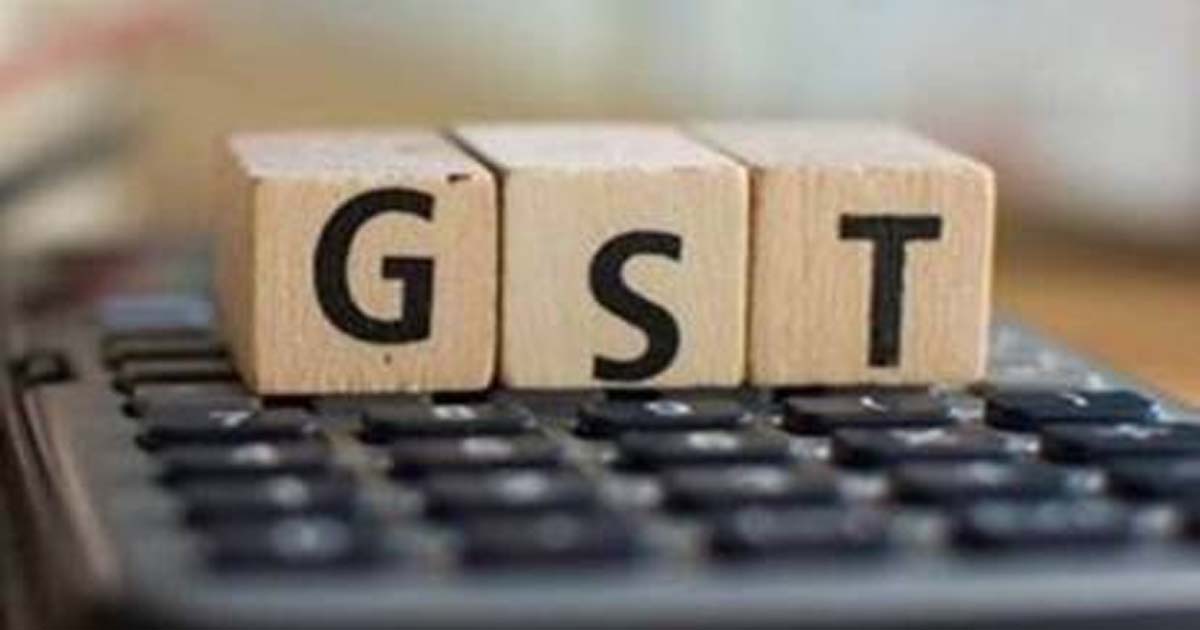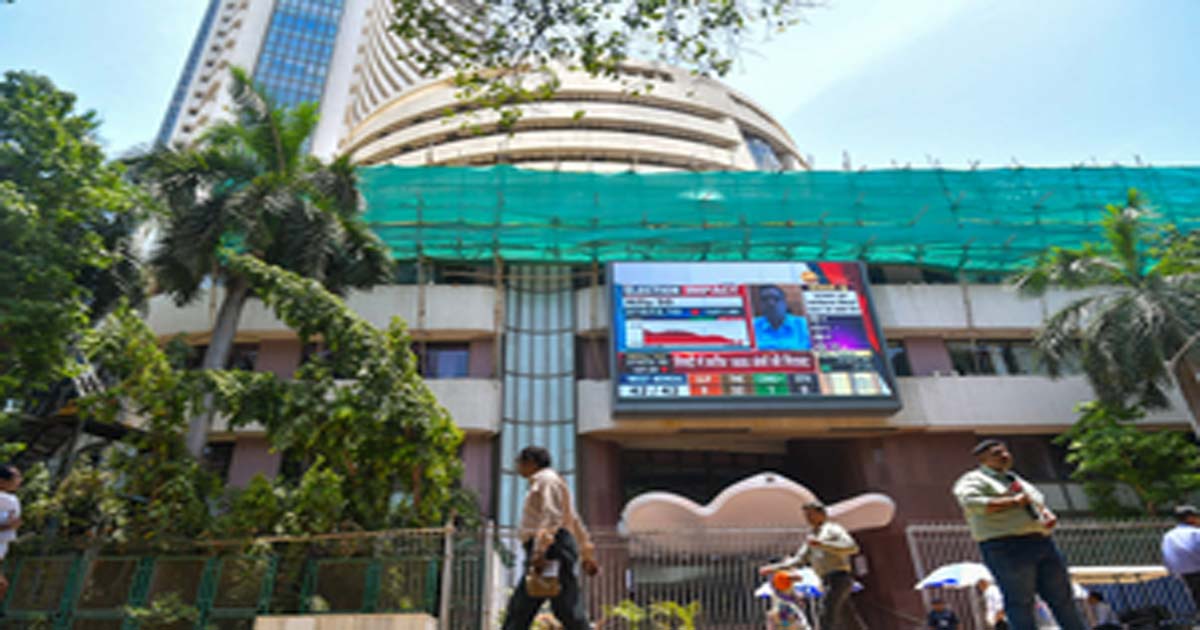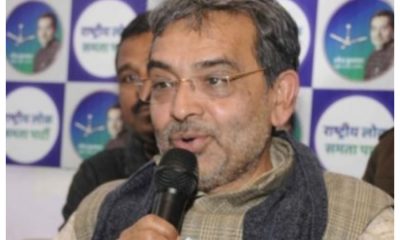Business
Union Budget: All key demands of Telangana ignored
The Union Budget 2022-23 came as a big shock for Telangana as all its demands for additional funds and new projects were ignored.
The budget speech of Finance Minister Nirmala Sitharaman also had no mention of the commitments made to the state under Andhra Pradesh Reorganisation Act 2014.
The state had high hopes from the budget and it had demanded allocation of Rs 60,000 crore for various projects. It was for this reason the budget evoked angry reaction from Chief Minister K. Chandrasekhar Rao, who termed it as ‘golmal’ and ‘useless’ budget.
Telangana’s long pending demand for national status to either Kaleshwaram or Palamuru-Rangareddy lift irrigation projects was again ignored by the Centre.
As per the budget estimates, Telangana will get Rs 17,165 crore during 2022-23 as its share in the central taxes. This is Rs 3,175.85 crore higher than the 2021-22 budget estimates and Rs 1,240.14 crore higher than the revised estimates.
However, there was no allocation to the state in addition to the state’s share in central taxes, funds for local bodies as per the recommendation of Finance Commission and allocation for centrally sponsored schemes.
With the Centre imposing a huge cut of Rs 25,000 crore on allocation of MGNREGS across the country, the flow of funds to the state under the rural employment guarantee scheme is likely to be badly hit.
Telangana has 1.19 crore workers registered under the scheme and they are provided work for 100 days in a year with minimum daily wages of Rs 237. With the cut in allocation the state may be forced to cut the number of workers or work days under the scheme. For the current financial year, the state has received Rs 3,053 crore under the central scheme.
The Centre also did not take the recommendation of 15th Finance Commission to allocate Rs 2,362 crore for state-specific grants for four years from 2022-23 into consideration. As per this recommendation, the state was expecting Rs 471 crore every year.
The state has also not received arrears towards the special assistance for development of backward areas under AP Reorganisation Act. For the last three years, the state government had been demanding release of Rs 24,205 crore as per the recommendation of NITI Aayog.
Similarly, the demand to allocate funds for Mission Bhagiratha and Mission Kakatiya as per the recommendation of NITI Aayog was once again ignored. Ahead of the budget, state finance minister T. Harish Rao had written to union finance minister Nirmala Sitharaman seeking Rs 5,205 crore for Mission Kakatiya, Rs 19,000 crore for Mission Bhagiratha as recommended by NITI Aayog.
Under Mission Kakatiya, the government has taken up revival of irrigation tanks and while Mission Bhagiratha is aimed at supplying drinking water to every house by laying pipelines.
Though the Telangana government has been urging the Centre for last seven years to fulfill the commitments made in AP Reorganisation Act, 2014, the same were ignored once again.
Under the Act, the Centre had promised railway coach factory at Kazipet, a tribal university and a steel factory at Bayyaram.
Telangana’s repeated demand for revival of Information Technology and Investment Region (ITIR) was once again ignored. In 2014, the then Congress-led UPA government had sanctioned ITIR for Hyderabad but after BJP-led NDA came to power, the project was shelved.
The state had also demanded setting up of IIM, Navodaya Vidayalayas, six industrial corridors, funds for Kakatiya mega textile park, Hyderabad Pharma City and various other urban infrastructure projects.
The Telangana Rashtra Samithi (TRS) government has been demanding that a progressive state like Telangana should be encouraged with allocation of funds and projects. The party leaders said once again the state was given a raw deal.
Ahead of the budget, Telangana ministers wrote a series of letters to Sitharaman seeking funds and projects for the state.
Minister for industries, information technology, municipal administration and urban development, K.T. Rama Rao, finance minister T. Harish Rao and tribal welfare minister Satyavathi Rathod wrote to Sitharaman and other union ministers seeking nearly Rs 60,000 crore to Telangana in the budget.
Rama Rao had sought Rs 7,800 crore for urban development, Rs 954 crore for textiles and handlooms, R. 14,000 crore for Hyderabad Pharma City.
State Planning Commission vice-chairman B. Vinod Kumar wrote to the Railway Minister seeking completion of pending railway projects and announcement of new railway lines for Telangana in the budget.
Business
GST reforms prove tax moderation can boost revenues: Report

New Delhi, Dec 24: Recent reforms under GST 2.0 show that simplification and tax moderation can coexist with strong revenue growth, a report said on Wednesday, calling for freezing peak tax rates and expanding tax base through technology.
The white paper from Think Change Forum said that recent GST reforms proved wrong the long-held belief that higher tax rates are necessary to boost collections as gross GST collections rose 4.5 per cent (on-year) to Rs 1.95 lakh crore in October 2025.
The report argued that the rise in tax collection validated the principle that in high‑informality economies compliance elasticity outweighs rate elasticity. The report, however, flagged that India’s tax‑to‑GDP ratio of around 17 per cent masks a narrow direct tax base and heavy reliance on regressive indirect levies.
“High taxes — whether direct or indirect — always encourage evasion and corruption. Lower taxes widen the base and improve compliance. GST collections are rising because the economy is formalising — but we must avoid creating a new 40 per cent peak rate that undermines compliance. Ideally, GST should be restricted to just 5 per cent and 18 per cent,” said Yogendra Kapoor, author and public speaker.
The forum called for prioritising freezing peak direct tax rates, expanding the direct tax base through technology, avoiding MRP‑based taxation and completing the GST credit chain in the upcoming Union Budget.
As the compensation cess sunsets, the MRP-based taxation is prone to manipulation in a cash-heavy economy and the government should rely instead on clean, specific duties that are easier to enforce.
The Budget should outline a phased roadmap to bring petroleum, electricity and other excluded inputs under GST to restore tax neutrality and reduce cascading costs for industry, it added.
It also listed other priorities including incentivising productive reinvestment and aggressively curtailing the parallel economy.
“The Budget must strengthen enforcement against smuggling, illicit trade and tax evasion so that non-compliance becomes costlier than compliance and honest taxpayers are no longer penalised,” the report noted.
Business
Sensex, Nifty record mild gains amid positive global cues

SHARE MARKET
Mumbai, Dec 24: Indian benchmark indices made moderate gains early on Wednesday amid positive global cues, as the stock market appears to be in a consolidation phase.
As of 9.30 am, Sensex advanced 105 points, or 0.12 per cent to 85,630 and Nifty gained 40 points, or 0.16 per cent to 26,217.
Main broad-cap indices outperformed benchmark indices in terms of gains, with the Nifty Midcap 100 advanced 0.31 per cent, while the Nifty Smallcap 100 added 0.53 per cent.
Hindalco Industries, Axis Bank and Cipla were among the major gainers in the Nifty Pack, while losers included Tech Mahindra, TCS, Titan Company, Dr Reddy’s Labs and Tata Consumer.
Among sectoral indices on NSE, Media, Metal and Realty were the major gainers — up around 0.82 per cent, 0.58 per cent and 0.78 per cent respectively. Nifty IT was leading losses down 0.49 per cent.
The Nifty could extend its advance toward resistance levels at 26,202 and 26,330, while 26,000 is expected to provide near-term support, said experts.
Analysts said that the market appears to be consolidating upward as CY2025 ends. Strong domestic macros and earnings growth expectations in Q3 and Q4 of FY26 and FY27 will support the market.
The market will be resilient due to domestic inflows and DII buying but FIIs may sell rallies, preventing a sharp breakout. The revival of the AI trade in US might impact sentiments in favour of a ‘non-AI trade’ in markets like India, they added.
An additional Rs 2 lakh crore OMO by the RBI will boost liquidity and lower yields, providing positive momentum to credit growth and bank stocks. The RBI on Tuesday announced a fresh set of steps to inject a large amount of money into the banking system to ease tight liquidity conditions.
Asia-Pacific markets traded flat with a positive bias, with several indexes set to close early in lieu of the Christmas Eve holiday.
In Asian markets, China’s Shanghai index advanced 0.24 per cent, and Shenzhen edged up 0.31 per cent, Japan’s Nikkei added 0.06 per cent, while Hong Kong’s Hang Seng Index gained 0.08 per cent. South Korea’s Kospi added 0.12 per cent.
The US markets ended mostly in the green zone overnight, as Nasdaq advanced 0.57 per cent, the S&P 500 edged up 0.46 per cent, and the Dow moved up 0.16 per cent.
On Tuesday, foreign institutional investors (FIIs) sold equities worth Rs 1,795 crore, while domestic institutional investors (DIIs) were net buyers of equities worth Rs 3,812 crore.
Business
Indian stock market opens lower, IT stocks lead losses

Mumbai, Dec 23: Indian benchmark indices opened in the red zone on Tuesday, weighed down by losses in the IT stocks after artificial intelligence (AI) stocks in the US showed revival.
As of 9.30 am, the Sensex declined 159 points, or 0.19 per cent to 85,407 and the Nifty lost 32 points, or 0.13 per cent to 26,139.
Main broad cap indices showed divergent trends, with the Nifty Midcap 100 down 0.18 per cent, while the Nifty Smallcap 100 added 0.07 per cent.
ONGC, Tata Steel and NTPC were among the major gainers in the Nifty Pack, while losers included Max Healthcare, TCS, Tech Mahindra, Asian Paints and ICICI Bank.
Sectoral indices on NSE were trading in the mixed zone, with IT leading losses down 1.21 per cent. Oil and gas as well as metal were the major gainers, up around 0.43 and 0.41 per cent, respectively.
Immediate resistance for Nifty is placed at 26,300–26,350, while key supports are located at 26,000–26,050 zone, said analysts.
Market watchers found two factors to affect the market in the near term, including positive macros or fundamentals and AI trade revival. Positive macro indicators may embolden bulls to push Nifty and Sensex to new highs. But the strong AI trade revival is a mild negative externally which may delay the anticipated FII outflow reversal, they said.
Defence stocks are seemingly recovering, with more room for growth in the segment, while the IT sector has also turned resilient, analysts said.
Asia-Pacific markets showed moderate gains on Tuesday, after AI trade lifted major Wall Street indexes overnight.
In Asian markets, China’s Shanghai index advanced 0.34 per cent, and Shenzhen edged up 0.65 per cent, Japan’s Nikkei added 0.02 per cent, while Hong Kong’s Hang Seng Index gained 0.33 per cent. South Korea’s Kospi added 0.45 per cent.
The US markets ended mostly in the green zone overnight, as Nasdaq advanced 0.52 per cent, the S&P 500 edged up 0.64 per cent, and the Dow moved up 0.47 per cent.
Investors are keen on rising geopolitical tensions between the US and Venezuela and delays in the Russia-Ukraine peace negotiations. The killing of a Russian army general in a bomb attack on Monday raised concerns over the peace process, lending support to crude oil prices.
On Monday, foreign institutional investors (FIIs) sold equities worth Rs 516 crore, while domestic institutional investors (DIIs) were net buyers of equities worth Rs 3,898 crore.
-

 Crime3 years ago
Crime3 years agoClass 10 student jumps to death in Jaipur
-

 Maharashtra1 year ago
Maharashtra1 year agoMumbai Local Train Update: Central Railway’s New Timetable Comes Into Effect; Check Full List Of Revised Timings & Stations
-

 Maharashtra1 year ago
Maharashtra1 year agoMumbai To Go Toll-Free Tonight! Maharashtra Govt Announces Complete Toll Waiver For Light Motor Vehicles At All 5 Entry Points Of City
-

 Maharashtra1 year ago
Maharashtra1 year agoFalse photo of Imtiaz Jaleel’s rally, exposing the fooling conspiracy
-

 National News1 year ago
National News1 year agoMinistry of Railways rolls out Special Drive 4.0 with focus on digitisation, cleanliness, inclusiveness and grievance redressal
-

 Maharashtra1 year ago
Maharashtra1 year agoMaharashtra Elections 2024: Mumbai Metro & BEST Services Extended Till Midnight On Voting Day
-

 National News1 year ago
National News1 year agoJ&K: 4 Jawans Killed, 28 Injured After Bus Carrying BSF Personnel For Poll Duty Falls Into Gorge In Budgam; Terrifying Visuals Surface
-

 Crime1 year ago
Crime1 year agoBaba Siddique Murder: Mumbai Police Unable To Get Lawrence Bishnoi Custody Due To Home Ministry Order, Says Report
















